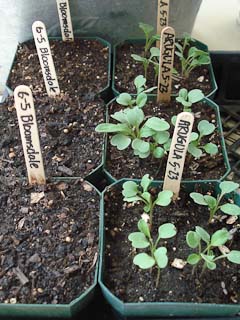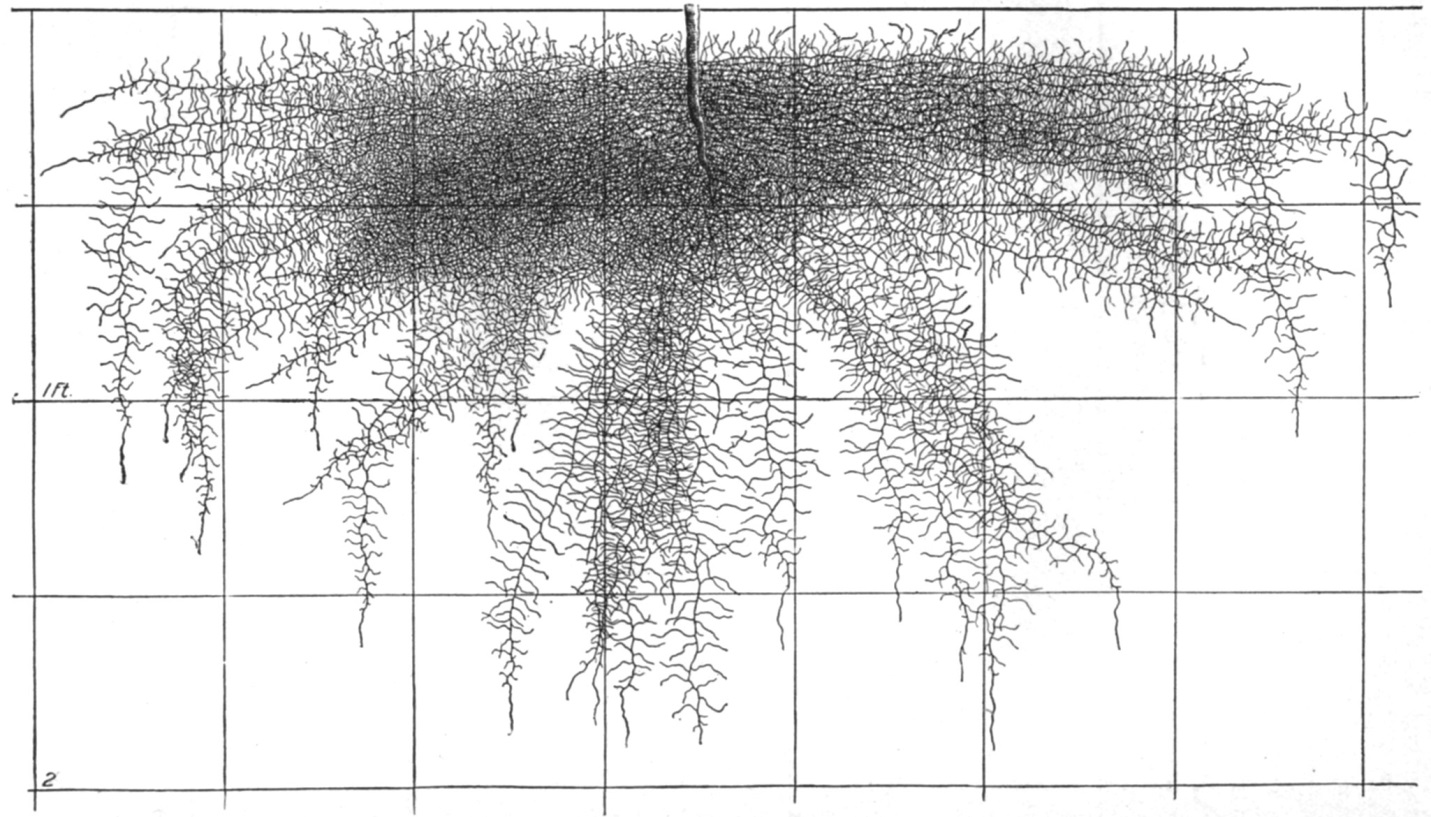- Home
- How to Start Seeds Indoors
- When to Start Seeds Indoors
When to Start Seeds Indoors
Timing Is Everything
 When to Start Seeds Indoors Depends on the Crop
When to Start Seeds Indoors Depends on the CropKnowing when to start seeds indoors can be quite tricky, because
different seeds have different germination times and preferred plant-out
temperatures.
For those who live in year-round frost-free zones, it's easy: just follow the times on the back of the seed packet that tell you how long between indoor seed-starting and transplanting-out.
But for those of us who live where it gets below freezing in the winter, when to start seeds indoors is determined by both the germination time on the seed packet AND our average last frost date, the date beyond which our area will be safe from further spring frosts. This is the first and most critical thing you must know in order to determine when to start seeds indoors.
I don't think everything in the Old Farmer's Almanac is accurate... but they do offer this fabulous Last Spring Frost Calculator where just type in your zip code and pronto! - up pops your average last frost date. Go get that now, if you don't know it already, and then come back here.
If you're outside North America, your national weather or agricultural service should be able to give you that information.
How to Combine This Information to Figure Out When to Start Seeds Indoors
I used to offer a free printable PDF chart for calculating your own seed-planting times, but I've now found something that will work much better for you! It figures it all out automatically (and for free):
Johnny's Seed-Starting Date Calculator
If you're a digital kinda person, that's all you need, boom, just check your phone and then put the dates in your Google calendar. This is handy, because the staggered planting times makes starting seeds indoors an ongoing project, not a one-day thing.
I'm a visual paper kinda person (yeah, I am old),
so I prefer to put the seed-starting dates on my gardening wall calendar, which I find really
useful. I also use my wall calendar to remind me when to start my
second- and third-crop lettuces, and to start my fall crops indoors in
mid-summer when it's too hot outside for good germination. It also carries my records of
weird weather events, hail, & other notable stuff.
There
are a few crops that I never start indoors anymore, despite what the
chart says. The reason is that I've found I get better, healthier, extended and actually faster yields when these plants' roots are never disturbed and the soil outside is really warm. I wait until the soil is 85° F before direct-seeding these crops in the ground.
These sensitive crops include both hot and sweet peppers,
cucumbers and squashes of all kinds. Have patience, wait for the soil to warm up and be welcoming to the seeds, and you'll be
rewarded come fall.
Plants' roots go much deeper and wider in search of water and nutrients than most people realize. While you may not think you are disturbing their roots when you transplant them out, tiny feeder roots do get broken and some crops never quite recover from the trauma (and they can't go to counseling later in life to work it out.)
 Pepper Plant's Roots at 6 Weeks of Age
Pepper Plant's Roots at 6 Weeks of AgeDrawing from: Root Development of Vegetable Crops)
by John Weaver, 1927
And if you don't have your seeds yet, you can check out the some of the best seed catalogs here.
Help share the skills and spread the joy
of organic, nutrient-dense vegetable gardening, and please...
~ Like us on Facebook ~
Thank you... and have fun in your garden!
Affiliate Disclaimer
This website contains affiliate links to a few quality products I can genuinely recommend. I am here to serve you, not to sell you, and I do not write reviews for income or recommend anything I would not use myself. If you make a purchase using an affiliate link here, I may earn a commission but this will not affect your price. My participation in these programs allows me to earn money that helps support this site. If you have comments, questions or concerns about the affiliate or advertising programs, please Contact Me.Contact Us Page



